
النبات

مواضيع عامة في علم النبات

الجذور - السيقان - الأوراق

النباتات الوعائية واللاوعائية

البذور (مغطاة البذور - عاريات البذور)

الطحالب

النباتات الطبية


الحيوان

مواضيع عامة في علم الحيوان

علم التشريح

التنوع الإحيائي

البايلوجيا الخلوية


الأحياء المجهرية

البكتيريا

الفطريات

الطفيليات

الفايروسات


علم الأمراض

الاورام

الامراض الوراثية

الامراض المناعية

الامراض المدارية

اضطرابات الدورة الدموية

مواضيع عامة في علم الامراض

الحشرات


التقانة الإحيائية

مواضيع عامة في التقانة الإحيائية


التقنية الحيوية المكروبية

التقنية الحيوية والميكروبات

الفعاليات الحيوية

وراثة الاحياء المجهرية

تصنيف الاحياء المجهرية

الاحياء المجهرية في الطبيعة

أيض الاجهاد

التقنية الحيوية والبيئة

التقنية الحيوية والطب

التقنية الحيوية والزراعة

التقنية الحيوية والصناعة

التقنية الحيوية والطاقة

البحار والطحالب الصغيرة

عزل البروتين

هندسة الجينات


التقنية الحياتية النانوية

مفاهيم التقنية الحيوية النانوية

التراكيب النانوية والمجاهر المستخدمة في رؤيتها

تصنيع وتخليق المواد النانوية

تطبيقات التقنية النانوية والحيوية النانوية

الرقائق والمتحسسات الحيوية

المصفوفات المجهرية وحاسوب الدنا

اللقاحات

البيئة والتلوث


علم الأجنة

اعضاء التكاثر وتشكل الاعراس

الاخصاب

التشطر

العصيبة وتشكل الجسيدات

تشكل اللواحق الجنينية

تكون المعيدة وظهور الطبقات الجنينية

مقدمة لعلم الاجنة


الأحياء الجزيئي

مواضيع عامة في الاحياء الجزيئي


علم وظائف الأعضاء


الغدد

مواضيع عامة في الغدد

الغدد الصم و هرموناتها

الجسم تحت السريري

الغدة النخامية

الغدة الكظرية

الغدة التناسلية

الغدة الدرقية والجار الدرقية

الغدة البنكرياسية

الغدة الصنوبرية

مواضيع عامة في علم وظائف الاعضاء

الخلية الحيوانية

الجهاز العصبي

أعضاء الحس

الجهاز العضلي

السوائل الجسمية

الجهاز الدوري والليمف

الجهاز التنفسي

الجهاز الهضمي

الجهاز البولي


المضادات الحيوية

مواضيع عامة في المضادات الحيوية

مضادات البكتيريا

مضادات الفطريات

مضادات الطفيليات

مضادات الفايروسات

علم الخلية

الوراثة

الأحياء العامة

المناعة

التحليلات المرضية

الكيمياء الحيوية

مواضيع متنوعة أخرى

الانزيمات
Creatine Kinase (CK)
المؤلف:
Marcello Ciaccio
المصدر:
Clinical and Laboratory Medicine Textbook 2021
الجزء والصفحة:
p85-86
2025-03-26
600
CK is an 82 kDa enzyme that catalyzes the reversible phosphorylation of creatine by consuming ATP. Physiologically, when muscle contracts, ATP is converted to adenosine diphosphate (ADP) and CK catalyzes the rephosphorylation of ADP into ATP by using phosphocreatine as a phosphorylation reservoir. Its concentration is therefore higher in striated muscle and cardiac muscle.
CK is a dimer consisting of two subunits (B and M), each with a molecular weight of ∼40 kDa. Since the active form of the enzyme is a dimer, only three different pairs of sub units can exist: BB, MB, and MM. All three of these isoen zyme forms are found in the cytoplasm of the muscle cell or are associated with myofibrillar structures. In skeletal muscle, MM represents the major isoform of CK (>99%), with a small proportion of MB. Cardiac tissue, on the other hand, contains the highest concentration of CK-MB, accounting for approximately 20% of cardiac CK. CK-BB is mainly and almost exclusively expressed in brain tissue (>90%). There is also a fourth isoenzyme (CK-Mt), which straddles mitochondrial membranes and, for example, in the heart, accounts for up to 15% of total CK activity. CK can also be found in macromolecular form, the so-called macro-CK, of which there are two types: type 1 and type 2. Type 1 is a complex consisting of CK, typically CK-BB, and an immunoglobulin, most often IgG. It has no clinical significance but can result in asymptomatic increases in CK, causing diagnostic confusion and leading to unnecessary further investigation. Its prevalence (80% of cases in women) has been estimated between 0.8% and 2.3%, but this depends on the study population. Type 2 macro-CK consists of oligomerized CK-Mt and has a prevalence between 0.5% and 2.6% in hospitalized patients. It is predominantly found in adults with malignant neoplasms or advanced liver disease and in children with significant tissue distress. The occurrence of this form in serum is usually associated with a poor prognosis.
Clinical Significance
Determination of CK is the laboratory test of choice when muscular injury is suspected. Serum CK concentrations are increased in almost all subjects following injury, inflammation, or necrosis of skeletal or cardiac muscle.
Increased serum CK activity may be the only sign of sub clinical neuromuscular disorders. Serum CK activity is markedly elevated in all types of muscular dystrophy. In progressive muscular dystrophy, serum enzyme activity is highest in childhood and adolescence and may be increased long before the disease becomes clinically manifest. Serum CK activity decreases significantly with increasing age and as muscle mass declines with disease progression. Approximately 50–80% of asymptomatic female carriers of Duchenne dystrophy show CK activity three to six times higher than physiologic values.
High CK values (up to 50 times the upper reference limit [URL] in active disease) are found in viral myositis, poly myositis, and other inflammatory myopathies. In contrast, in neurogenic muscle diseases, such as myasthenia gravis, multiple sclerosis, poliomyelitis, and Parkinson’s disease, serum enzyme activity is not increased. Very high CK activities are also found in malignant hyperthermia, a hereditary condition characterized by high fever and triggered by the administration of an anesthetic (usually halothane) in affected individuals.
In acute rhabdomyolysis due to crush injury, with severe muscle destruction, serum CK activity may be >200 times the URL. In this condition, very high serum CK concentrations, reflecting the marked myoglobinuria and the heme- induced mechanism of renal damage, have been associated with a high risk of developing acute renal failure. If CK remains <5000 U/L (∼30 times the URL) during the first 3 days after the insult, the likelihood of developing renal failure appears to be low. Serum CK may also be moderately increased following other muscle trauma, such as a simple intramuscular injection and surgery. Finally, several drugs can increase serum CK activity. The drugs most frequently involved are statins, fibrates, antiretrovirals, and angiotensin II receptor antagonists. The clinical spectrum of statin- induced myotoxicity includes asymptomatic increases in serum CK activity, myalgia, myositis, and rhabdomyolysis (0.02%). Routine monitoring of CK in asymptomatic patients taking statins is not recommended; however, CK should be assessed in subjects with muscle pain and weakness, and statin treatment should be discontinued if values are >5 times Changes in serum concentrations of CK and its isoen zyme MB following acute myocardial infarction have been the mainstay of diagnosis of this condition for many years. However, it is now more appropriate to use cardio-specific markers, such as cardiac troponin I or T.
Hypothyroidism is a common cause of endocrine myopathy. Approximately 60% of hypothyroid subjects shows an average increase in CK >5 times the URL.
During a physiological delivery, there is an average sixfold increase in maternal CK activity in serum. Surgical interventions during childbirth further increase this activity.
Reference Intervals
Serum CK activity undergoes several physiological variations. It is influenced by gender, age, ethnicity, muscle mass, and physical activity. Males have higher values than females and African Americans have higher values than Caucasians. Males, however, have a decrease in CK with aging.
In Caucasian subjects, the reference interval is 46–171 U/L for males and 34–145 U/L for females. Serum CK activity in healthy subjects is due almost exclusively to CK-MM activity (although small amounts of CK-MB may be present) and is the result of physiologic turnover of muscle tissue. Exercise, particularly if unusual, and muscle trauma can increase serum CK activity, which can rise above ten times the URL in the first 24 hours after activity. Infants generally have higher CK activity (up to 10 × adult URL) caused by muscle trauma sustained during birth. Concentrations return to the adult reference interval between 6 and 10 weeks of age.
 الاكثر قراءة في التحليلات المرضية
الاكثر قراءة في التحليلات المرضية
 اخر الاخبار
اخر الاخبار
اخبار العتبة العباسية المقدسة

الآخبار الصحية















 "المهمة".. إصدار قصصي يوثّق القصص الفائزة في مسابقة فتوى الدفاع المقدسة للقصة القصيرة
"المهمة".. إصدار قصصي يوثّق القصص الفائزة في مسابقة فتوى الدفاع المقدسة للقصة القصيرة (نوافذ).. إصدار أدبي يوثق القصص الفائزة في مسابقة الإمام العسكري (عليه السلام)
(نوافذ).. إصدار أدبي يوثق القصص الفائزة في مسابقة الإمام العسكري (عليه السلام) قسم الشؤون الفكرية يصدر مجموعة قصصية بعنوان (قلوب بلا مأوى)
قسم الشؤون الفكرية يصدر مجموعة قصصية بعنوان (قلوب بلا مأوى)


















